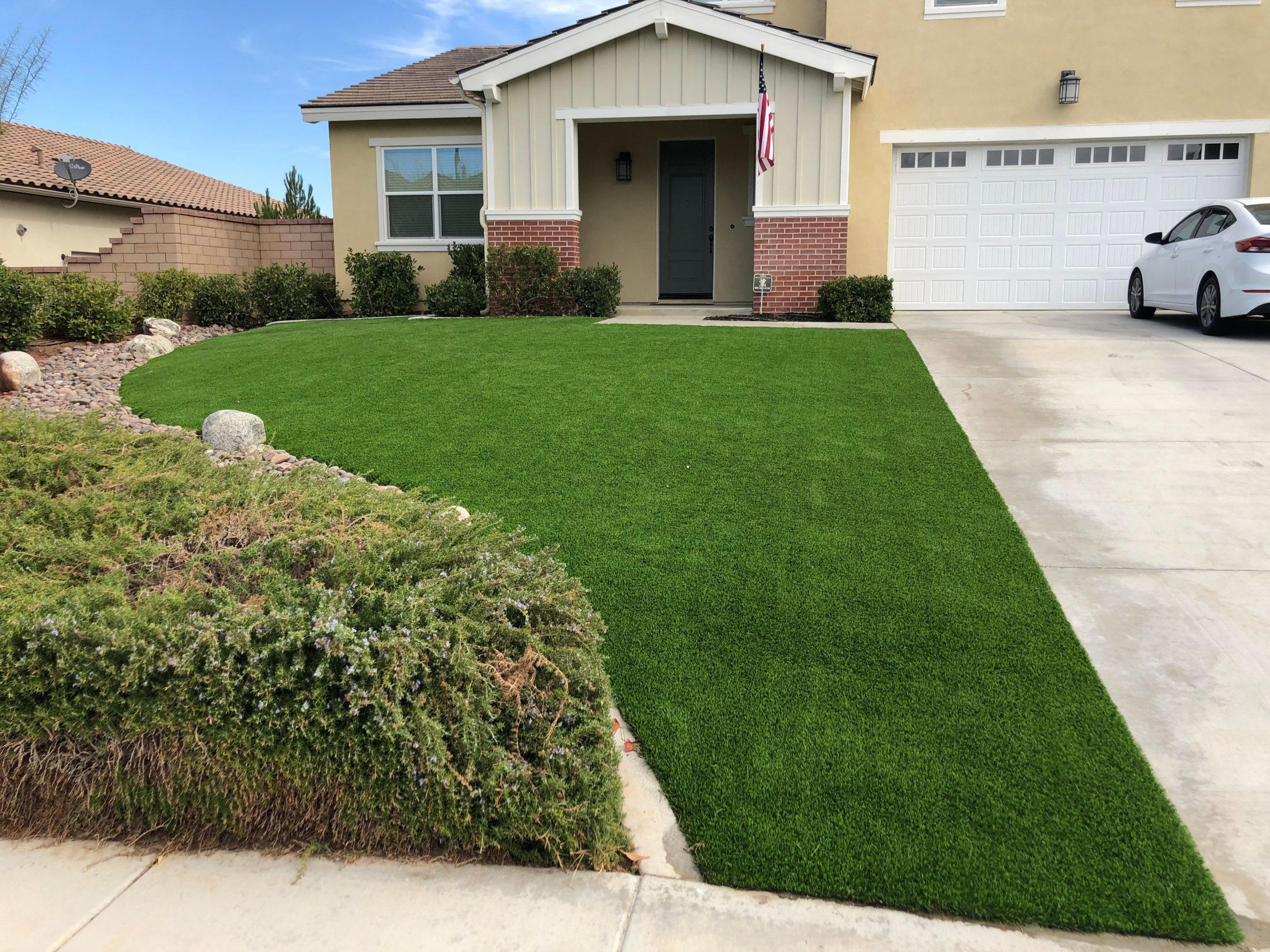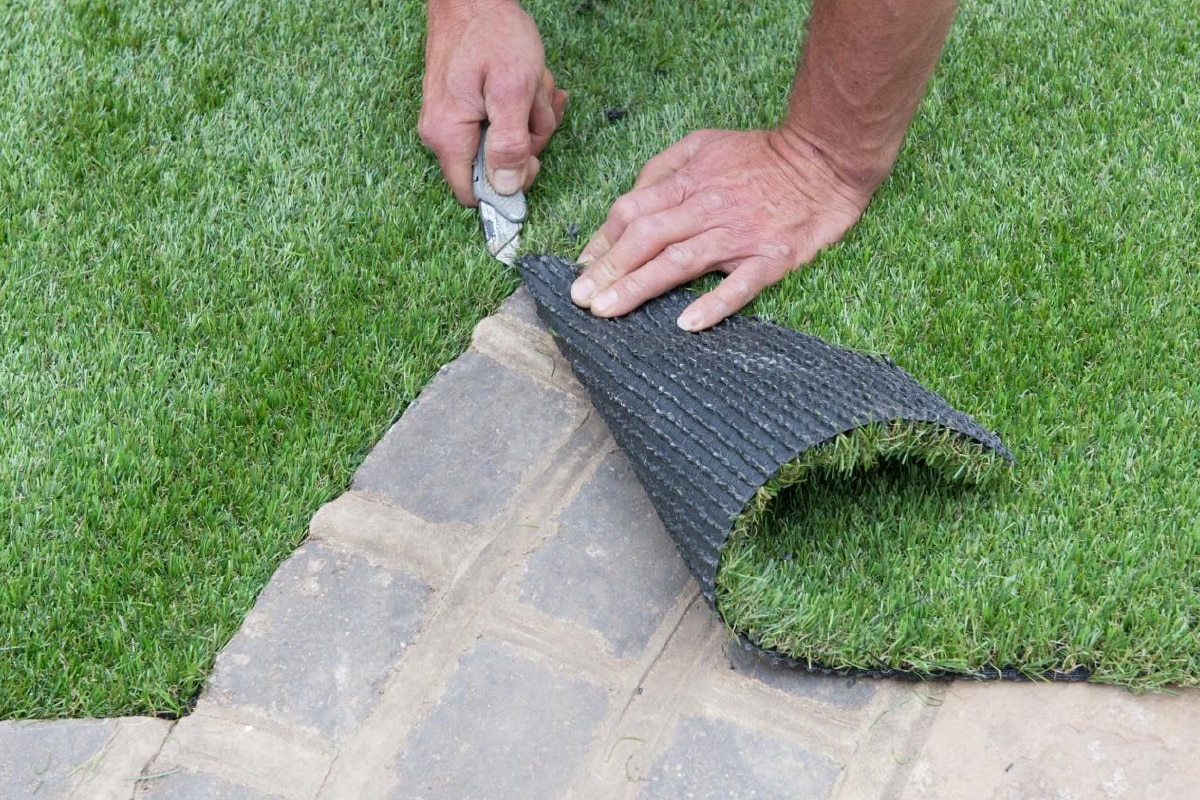Why is Synthetic Turf Edging Important?
The use of synthetic turf has become increasingly popular in recent years. From sports fields to residential yards, artificial turf is a low-maintenance and aesthetically pleasing alternative to natural grass.
To ensure synthetic turf lasts long, it must be secure. That’s why synthetic turf edging is so essential.

What Is Synthetic Turf Edging?
Artificial turf edging has two purposes:
- The edging keeps the turf in place by securing its base materials.
- Edging ensures a polished look with defined exterior edges.
Essentially, an artificial lawn edging system creates a perimeter for the area while anchoring it to the ground. To install artificial grass edging, professionals may use a strong adhesive, pins, nails, turf glue, or another method. This process can be done using various materials to match the size and style of the space, including:
- Steel – Steel edging systems are popular because they are durable and weather resistant. While steel is more expensive than other materials, many prefer it due to its longevity.
- Timber – Timber wood is a popular choice for turf edging because of its natural look and easy installation. Timber can easily be secured into the ground using stakes and then connected to artificial turf with proper screws. Plus, timber has a natural look that works great in outdoor applications.
- Composite Plastic – Like timber, composite plastic is easy to install and is a popular choice for synthetic turf edging. This plastic comes in various colors and textures. Unlike timber, composite plastic edging won’t rot, making it the preferred choice for many applications.
The Importance of Synthetic Turf Edging
Without edging, synthetic turf installation may have issues, including:
- Weeds – One of the key benefits of artificial turf is that, unlike natural grass, it doesn’t require weeding and other maintenance. However, if the artificial grass isn’t properly edged, weeds may pop out of the outer edges of the surface.
- Uneven Surface – Because artificial turf applications often involve heavy foot traffic, the turf needs to stay sturdy under the pressure. Without edging, the elements under the turf may spill out of the sides, creating an uneven surface above.
- Erosion – Soil erosion is common in natural grass and environments. If an artificial grass lawn isn’t properly edged, the soil beneath may erode over time. A fitted edge that secures the turf parameters helps prevent this problem.
Thankfully, quality synthetic turf edging helps eliminate these problems so turf can be enjoyed as a comfortable and long-lasting surface.

About Turf Distributors
Turf Distributors is America’s largest artificial turf wholesaler. Whether you’re looking to start an artificial turf business or want to add quality turf to your inventory, we are the team for the job. Our experts will use their industry knowledge and experience to help you find the perfect fit.
But don’t just take it from us. Browse our selection of turf products to see what we can offer you, and then give us a call! We are committed to helping our clients meet their business goals and better serve their customers.
Frequently Asked Questions
Do you need edging for synthetic turf?
Yes, synthetic grass requires edging to keep it in place and prevent weed growth, erosion, and other issues.
What edging is used for artificial grass?
Various materials can be used to edge artificial turf, including steel, aluminum, timber, poly board, and more.
What are the advantages of artificial turf?
Artificial turf has the look and feel of natural grass without the hassle of maintenance. Synthetic turf is durable, weather resistant, and keeps its color all year long.
Add Quality Turf to Your Inventory Today
